Search Result
Results for "
PC12
" in MedChemExpress (MCE) Product Catalog:
1
Isotope-Labeled Compounds
| Cat. No. |
Product Name |
Target |
Research Areas |
Chemical Structure |
-
- HY-N8103
-
|
|
Amyloid-β
|
Neurological Disease
|
|
Heishuixiecaoline A is a germacrane-type sesquiterpenoid. Heishuixiecaoline A shows protective effect on the neurotoxicity of PC12 cells induced by Aβ25-35 .
|
-

-
- HY-N9085
-
|
|
Bacterial
|
Neurological Disease
|
|
Neuchromenin is a microbial melabolite that can be isolated from the culture broth of Eupenicillium javanicum var. meloforme PFll81. Neuchromenin induces neurite outgrowth of PC12 cells .
|
-

-
- HY-N3563
-
|
|
Others
|
Neurological Disease
|
|
Celaphanol A is a diterpene that can be isolated from the root bark of Celastrus orbiculatus. Celaphanol A shows neuroprotective effect against a hydrogen peroxide-induced cytotoxicity in PC12 cells .
|
-
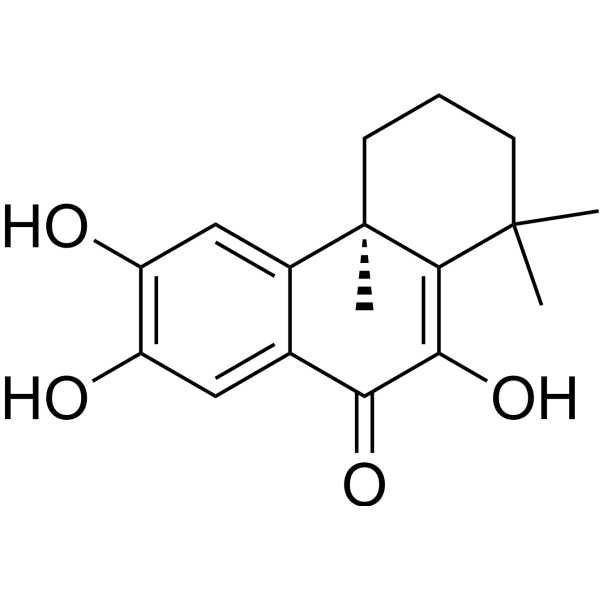
-
- HY-N11001
-
|
|
Others
|
Neurological Disease
|
|
Erinacine U is a cyanogen diterpene isolated from Hericium erinaceus, which has neurotrophic activity and has obvious neurite growth-promoting effect on PC12 cells .
|
-
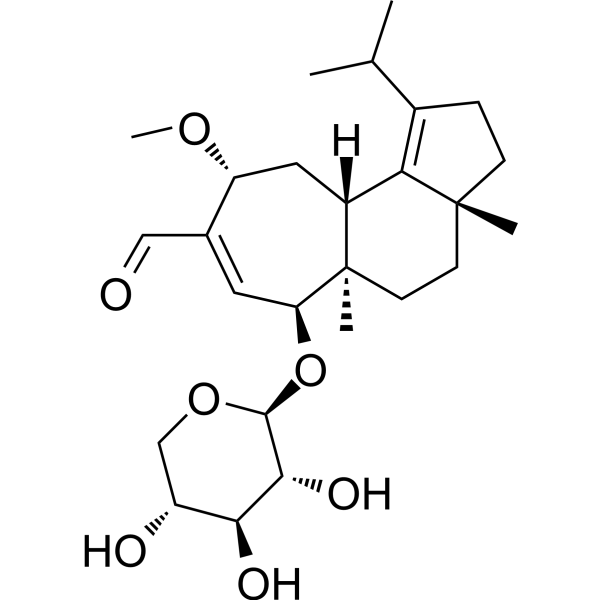
-
- HY-N10325
-
|
|
Others
|
Others
|
|
Scabronine M is a novel inhibitor of NGF-induced neurite outgrowth from PC12 cells.
|
-
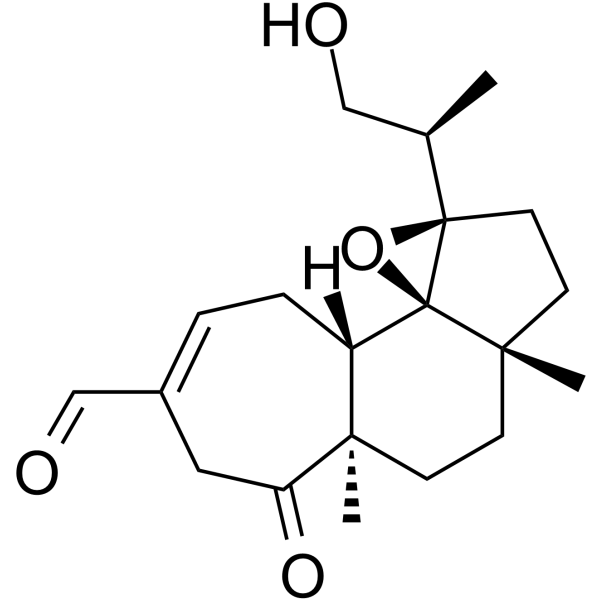
-
- HY-N12225
-
|
|
Others
|
Neurological Disease
|
|
Isoasiaticoside is a pentacyclic triterpene saponin that can be isolated from Centella asiatica. Isoasiaticoside has potential neuroprotective effects in the 6-OHDA (HY-B1081)-induced PC12 cell model .
|
-
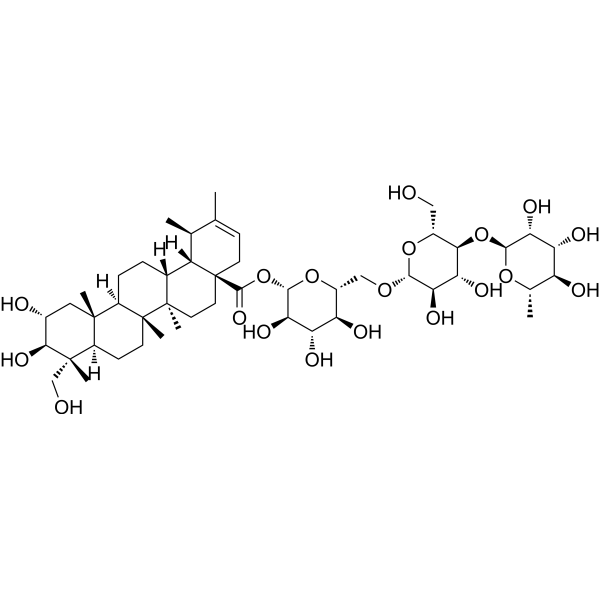
-
- HY-117517
-
|
|
Others
|
Cancer
|
|
NG-012, potentiator of nerve growth factor (NGF), were isolated from the culture broth of Penicillium verruculosum F-4542. NG-012 potentiates the neurite outgrowth induced by NGF in rat pheochromocytoma cell line (PC12) .
|
-
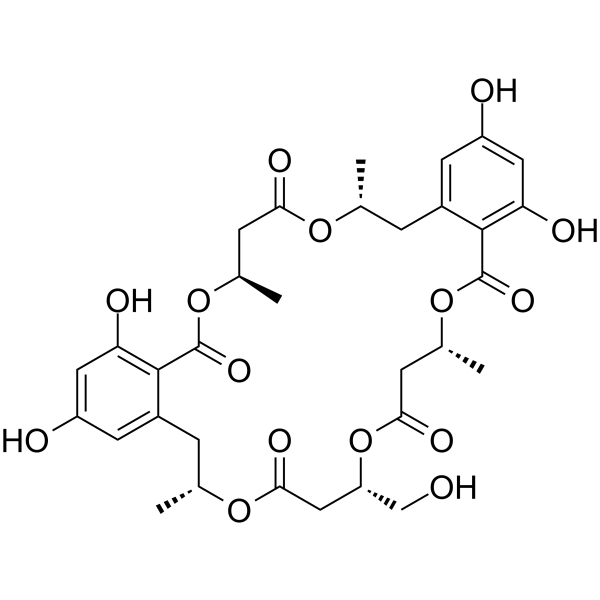
-
- HY-110166
-
|
|
Others
|
Neurological Disease
|
|
PD 90780 is a non peptide antagonist of nerve growth factor (NGF). PD 90780 interacts with NGF, prevents NGF binds with p75 NTR. PD 90780 inhibits NGF-p75 NTR interaction with IC50s of 23.1 and 1.8 µM in PC12 cells and PC12 nnr5 cells, respectively .
|
-

-
- HY-N4285
-
-
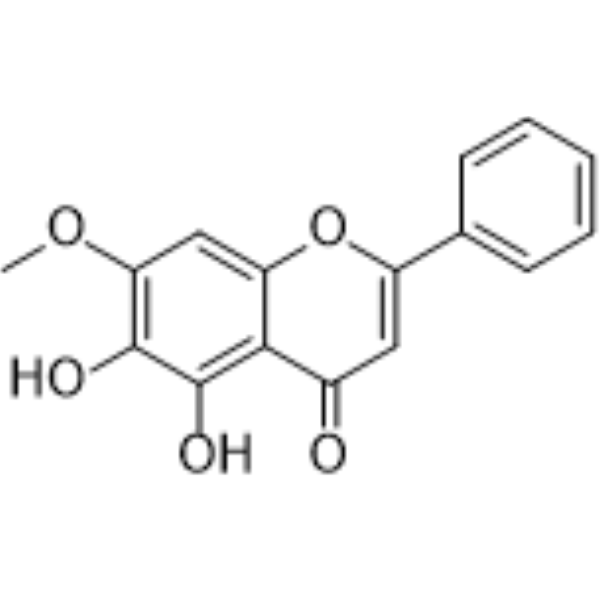
-
- HY-N12123
-
|
|
Others
|
Others
|
|
Peimisine 3-O-β-D-glucopyranoside (Compound 1) is a steroid alkaloid. Peimisine 3-O-β-D-glucopyranoside can be isolated and purified from natural Fritillaria unibracteata. Peimisine 3-O-β-D-glucopyranoside shows moderate protective effect on rotenone-induced neurotoxicity of PC12 cell line .
|
-

-
- HY-N2099
-
|
|
Autophagy
|
Neurological Disease
|
|
Onjisaponin B is a natural product derived from Polygala tenuifolia. Onjisaponin B enhances autophagy and accelerates the degradation of mutant α-synuclein and huntingtin in PC-12 cells, and exbibits potential therapeutic effects on Parkinson disease and Huntington disease .
|
-
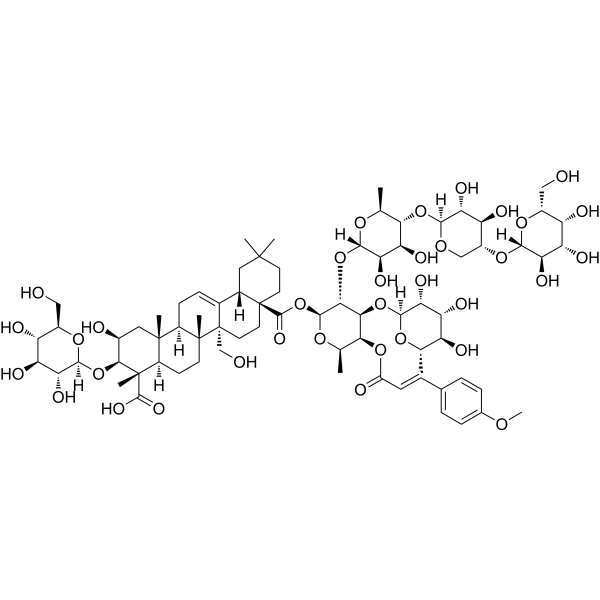
-
- HY-N10384
-
|
|
Cholinesterase (ChE)
|
Neurological Disease
|
|
AChE-IN-17 (compound 1) is a potent AChE inhibitor with an IC50 value of 28.98 μM. AChE-IN-17 can significantly prevent H2O2-induced PC12 cell death, exhibiting excellent neuroprotective effect. AChE-IN-17 can be used for researching neurodegenerative diseases (NDs) .
|
-
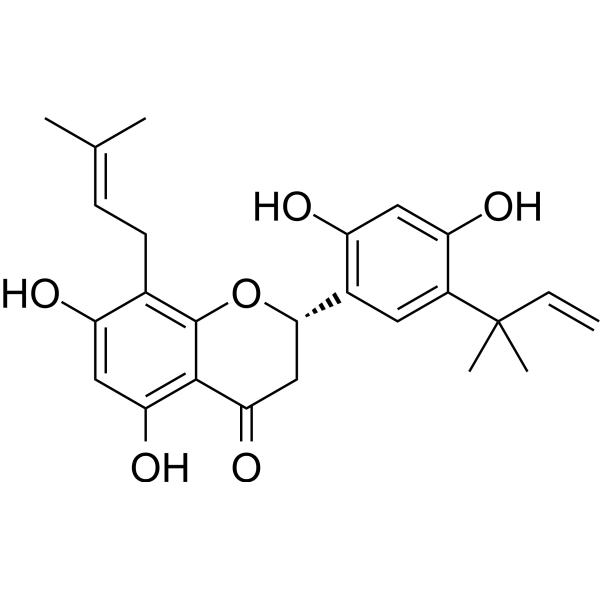
-
- HY-N12001
-
|
|
Others
|
Neurological Disease
|
|
6-Epiagarotetrol is a neuroprotective agent can be extracted from Aquilaria sinensis. 6-Epiagarotetrol has a protective effect on corticosterone-induced PC12 cell damage .
|
-
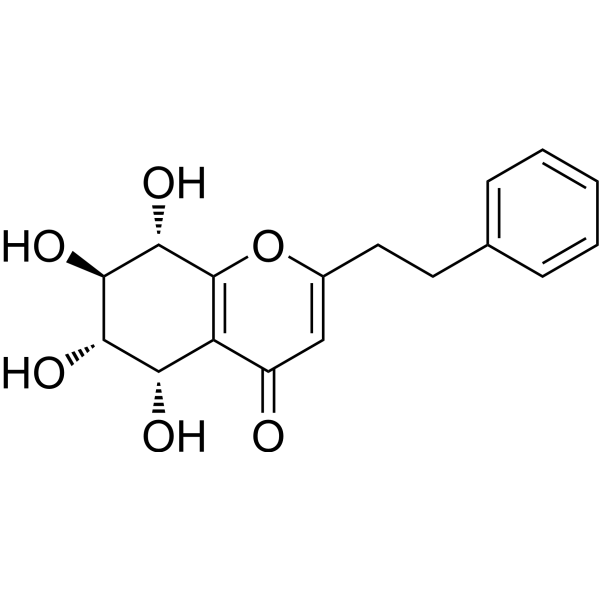
-
- HY-N3550
-
|
|
Others
|
Cancer
|
|
Catalponol is a naphthoquinone derivative. Catalponol enhances dopamine biosynthesis by inducing tyrosine hydroxylase activity. Catalponol also increases the levels of cAMP and tyrosine hydroxylase phosphorylation in PC12 cells .
|
-
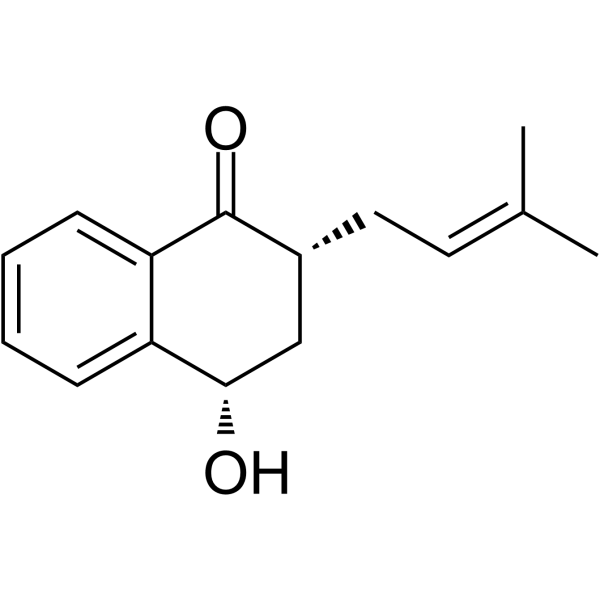
-
- HY-128536
-
|
|
Fluorescent Dye
|
Others
|
|
KMG-104AM, a selective fluorescein-derived magnesium fluorescent membrane-permeable probe, successfully incorporates into PC12 cells and is used to Intracellular 3D Mg 2+ Imaging .
|
-
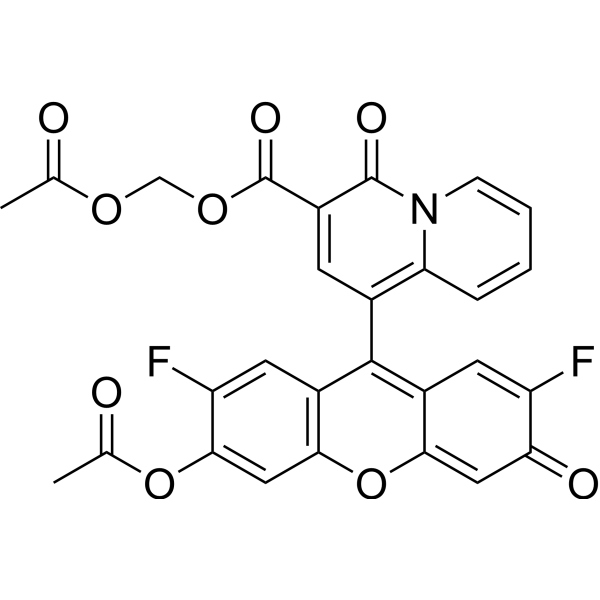
-
- HY-N5021
-
|
AHSYB
|
Others
|
Neurological Disease
|
|
Anhydrosafflor yellow B (AHSYB) is a quinochalcone C-glycoside isolated from Carthamus tinctorius. Anhydrosafflor yellow B inhibits ADP-induced platelet aggregation, exhibits significant anti-oxidative effects in vitro, and possesses certain activity against H2O2-induced cytotoxicity in cultured PC12 cells and primary neuronal cells .
|
-

-
- HY-133101
-
|
|
Others
|
Cancer
|
|
14-Norpseurotin is a compound isolated from the culture of Aspergillus fumigatus. 14-Norpseurotin significantly induces neurite outgrowth of rat pheochromocytoma cells (PC12) at a 10.0 microM concentration .
|
-
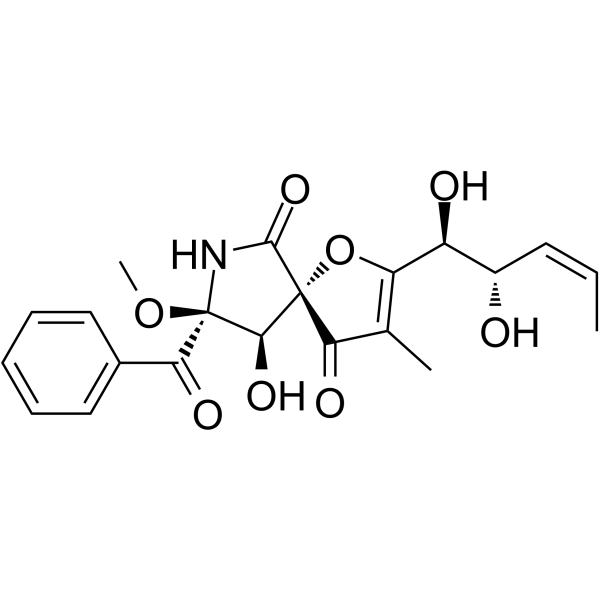
-
- HY-136480
-
|
|
Amyloid-β
|
Neurological Disease
|
|
Chrysamine G, a carboxylic acid analogue of Congo Red, can be used as a probe of amyloid deposition in Alzheimer's disease. Chrysamine G also can inhibit Aβ-induced toxicity in PC12 cells .
|
-

-
- HY-162330
-
|
|
HDAC
|
Neurological Disease
|
|
HDAC6-IN-36 (compound 11d) is an inhibitor of HDAC6 with IC50 value of 8.64 nM. HDAC6-IN-36 induces neurite outgrowth of PC12 cells without producing toxic effects.
|
-
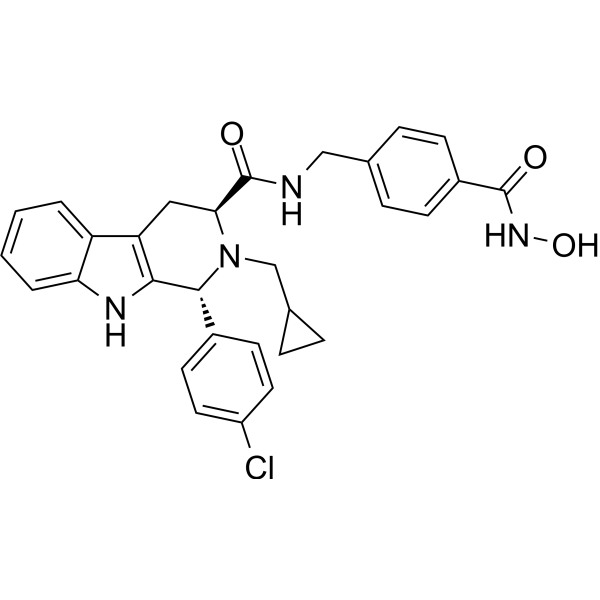
-
- HY-P5754
-
|
|
Apoptosis
|
Neurological Disease
|
|
TAT-NEP1-40 is a BBB-penatrable peptide. TAT-NEP1-40 protects PC12 cells against oxygen and glucose deprivation (OGD), and promotes neurite outgrowth. TAT-NEP1-40 also improves ischemia-induced neurologic outcomes by inhibiting cell apoptosis in ischemic brains. TAT-NEP1-40 can be used for research of CNS injuries, such as axonal regeneration and functional recovery after stroke .
|
-

-
- HY-155049
-
|
|
iGluR
|
Neurological Disease
|
|
NMDA receptor antagonist 6 (compound 13b) is an antagonist of NMDA receptor, targeting to the glycine binding site. NMDA receptor antagonist 6 shows cytoneuroprotective potency, and protects PC12 cells against NMDA-induced injury and cell apoptosis .
|
-
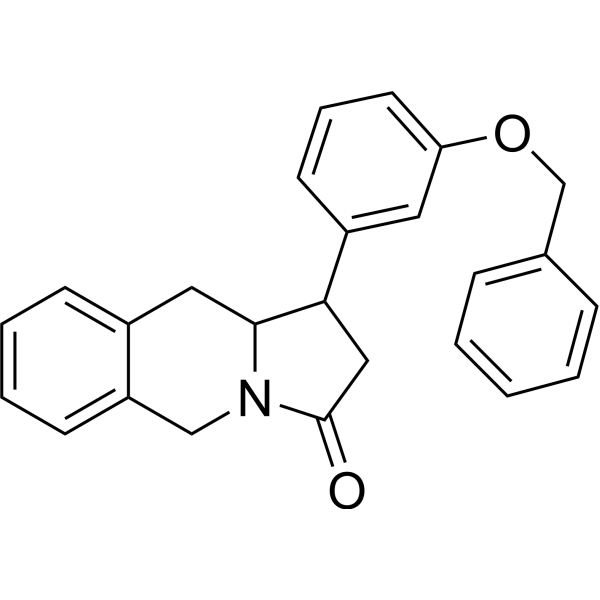
-
- HY-P5876
-
|
ProADM N20(bovine, porcine); PAMP-20(bovine, porcine)
|
nAChR
|
Neurological Disease
|
|
Proadrenomedullin (N-20) (ProADM N20) (bovine, porcine) is a potent and noncompetitive hypotensive and catecholamine release-inhibitory peptide released from chromaffin cells. Proadrenomedullin (N-20) (bovine, porcine) inhibits catecholamine secretion with an IC50 of 350 nM in PC12 pheochromocytoma cells. Proadrenomedullin (N-20) (bovine, porcine) also blocks (EC50≈270 nM) nicotinic cholinergic agonist desensitization of catecholamine release, as well as desensitization of nicotinic signal transduction ( 22Na + uptake) .
|
-
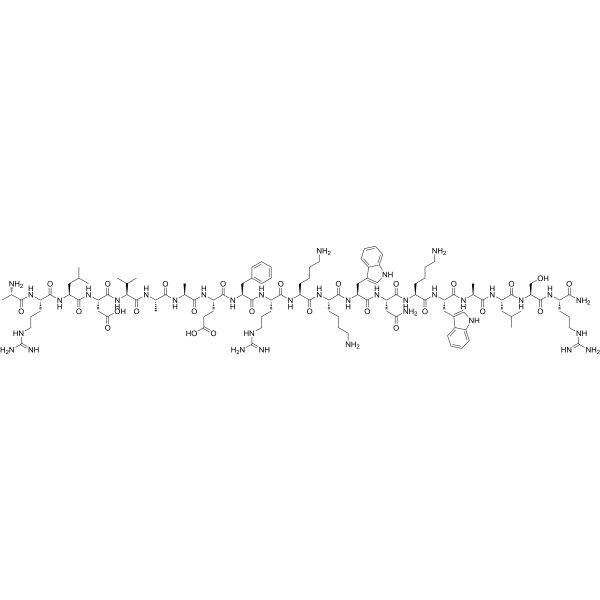
-
- HY-P5754A
-
|
|
Apoptosis
|
Neurological Disease
|
|
TAT-NEP1-40 TFA is a BBB-penatrable peptide. TAT-NEP1-40 TFA protects PC12 cells against oxygen and glucose deprivation (OGD), and promotes neurite outgrowth. TAT-NEP1-40 TFA also improves ischemia-induced neurologic outcomes by inhibiting cell apoptosis in ischemic brains. TAT-NEP1-40 TFA can be used for research of CNS injuries, such as axonal regeneration and functional recovery after stroke .
|
-
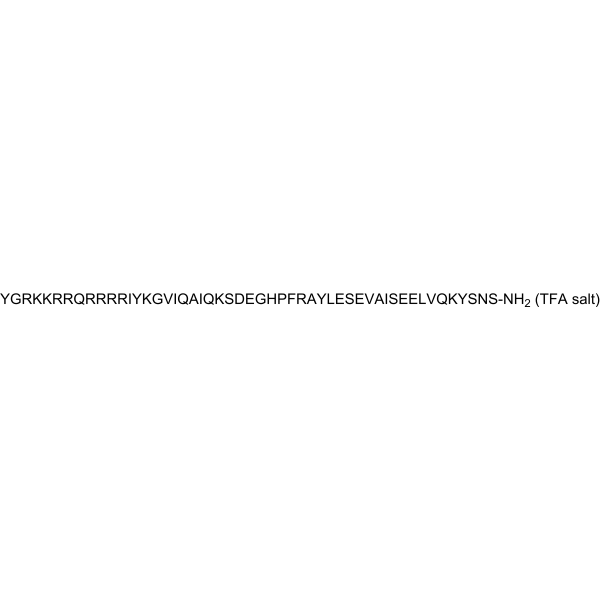
-
- HY-N2180
-
|
(+)-Eudesmin
|
|
|
|
Pinoresinol dimethyl ether ((+)-Eudesmin) is a non-phenolic furofuran lignan isolated from Magnolia biondii with neuritogenic activity. Pinoresinol dimethyl ether ((+)-Eudesmin) can induce neuritis outgrowth from PC12 cells by stimulating up-stream MAPK, PKC and PKA pathways .
|
-
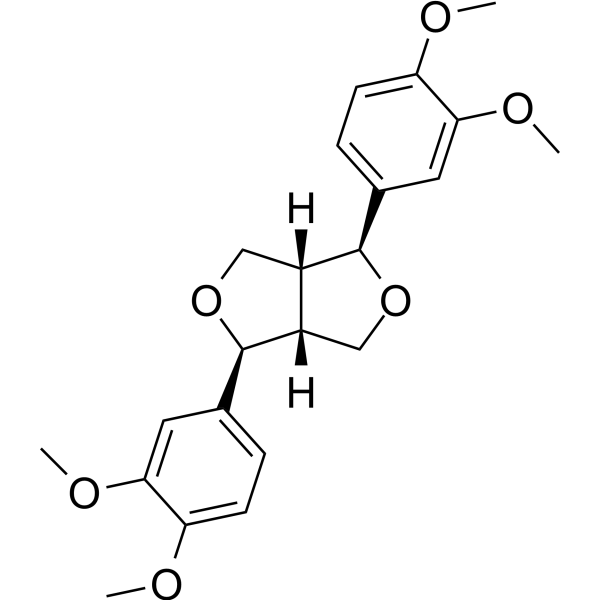
-
- HY-P5754B
-
|
|
Apoptosis
|
Neurological Disease
|
|
TAT-NEP1-40 acetate is a therapeutic candidate for axonal regeneration and functional recovery after stroke. TAT-NEP1-40 acetate can protect PC12 cells against oxygen and glucose deprivation (OGD) and promote neurite outgrowth. TAT-NEP1-40 acetate protects the brain against ischemia/reperfusion injury through inhibition of neuronal apoptosis. TAT-NEP1-40 acetate can be efficiently delivered into the rat brains .
|
-
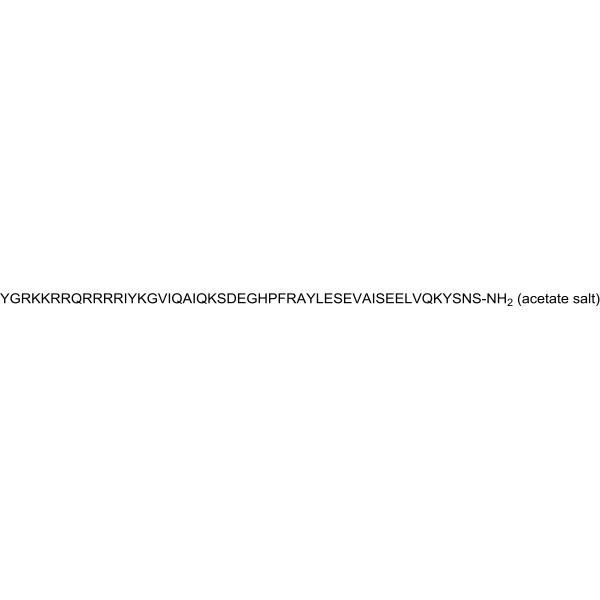
-
- HY-N3562
-
|
|
Reactive Oxygen Species
|
Neurological Disease
|
|
Cedrin is a natural flavonoid that can be found in Cedrus deodara. Cedrin protects PC12 cells against neurotoxicity induced by Aβ1-42. Cedrin can reduce reactive oxygen species overproduction, increase the activity of superoxide dismutase and decrease malondialdehyde content .
|
-

-
- HY-125125
-
|
|
Others
|
Neurological Disease
|
|
Danshenxinkun D is an anti-Alzheimer's disease (AD) candidate. Danshenxinkun D can significantly reverse the expression of PSEN1 and DRD2 mRNA in H2O2 treated PC12 cells. Danshenxinkun D can be used in the study of anti-Alzheimer's disease product candidate [1].
|
-
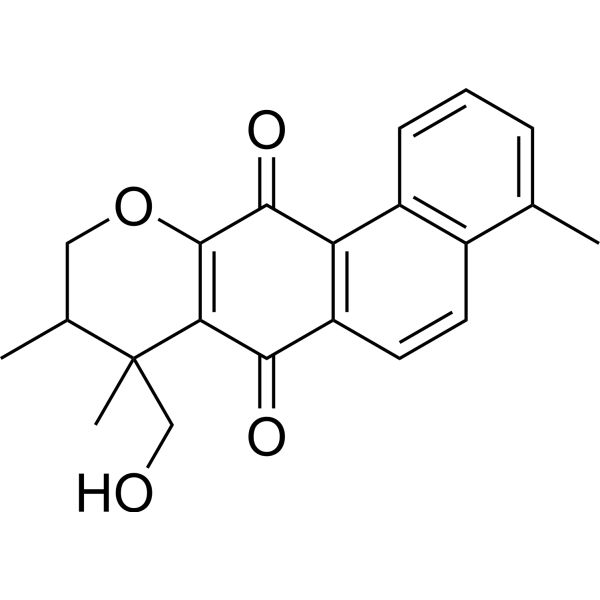
-
- HY-N9257
-
|
|
Others
|
Neurological Disease
|
|
8-Hydroxypinoresinol4,4'-di-O-β-D-glucopyranoside (Compound 7) is a compound derived from roots and rhizomes. 8-Hydroxypinoresinol4,4'-di-O-β-D-glucopyranoside could prevent neurotoxicity in PC12 cells .
|
-

-
- HY-17406S
-
|
Ro 40-7592 d7
|
Isotope-Labeled Compounds
COMT
Amyloid-β
|
Neurological Disease
|
|
Tolcapone-d7 is a deuterium labeled Tolcapone. Tolcapone is a selective, potent and orally active COMT inhibitor. Tolcapone is also a potent inhibitor of α-syn and Aβ42 oligomerization and fibrillogenesis and protect against extracellular toxicity induced by the aggregation of both proteins in PC12 cells[1][2].
|
-

-
- HY-N3489
-
|
|
Others
|
Neurological Disease
|
|
Isodihydrofutoquinol B (compound 9), an active compound, can be isolated from the stems of Piper kadsura (Choisy) Ohwi. Isodihydrofutoquinol B has A neuroprotective effect on Aβ25-35-induced PC12 cell damage with E50 values of 3.06-29.3μM .
|
-
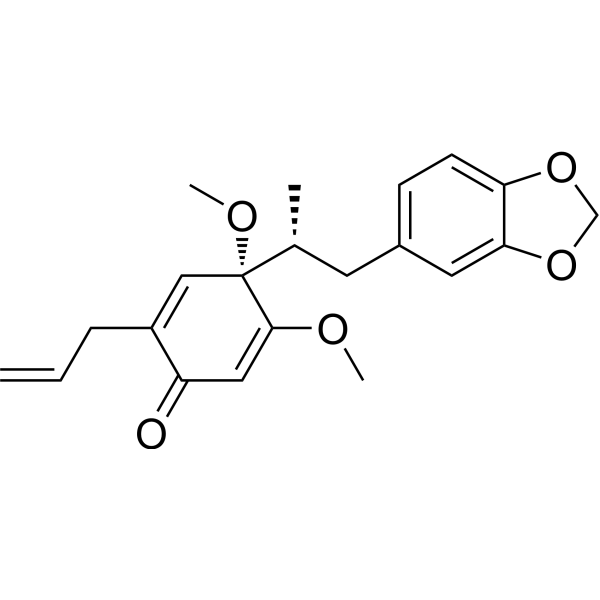
-
- HY-151431
-
|
|
Keap1-Nrf2
Reactive Oxygen Species
ERK
Akt
JNK
|
Neurological Disease
|
|
Nrf2/HO-1 activator 2 (compound 13m), difluoro-substituted derivative, is a potent Nrf2/HO-1 activator. Nrf2/HO-1 activator 2 has neuroprotective and antioxidant effects through the Nrf2/HO-1 pathway mediated by phosphorylation of ERK1/2, JNK, or Akt in PC12 cells. Nrf2/HO-1 activator 2 can be used in the research of Parkinson's disease (PD) .
|
-
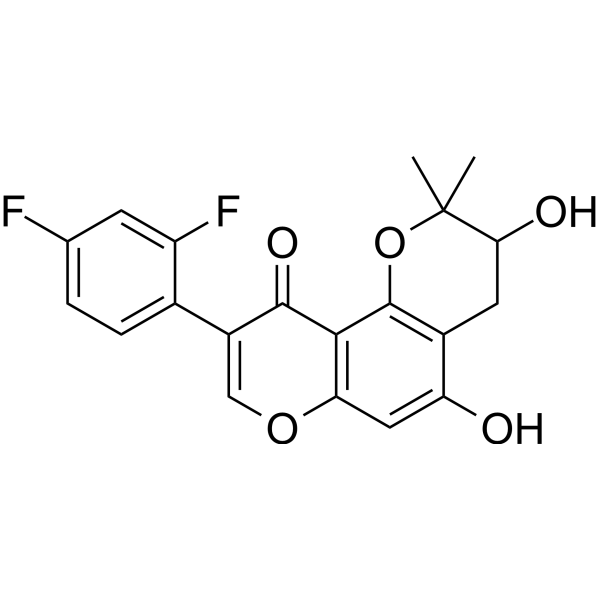
-
- HY-P5156
-
|
|
Potassium Channel
|
Neurological Disease
|
|
BDS-I known as blood depressing substance, is a marine toxin which can be extracted from Anemonia sulcata. BDS-I is a specific inhibitor of Potassium Channel, targeting to Kv3.4. BDS-I inhibits Aβ1-42-induced enhancement of KV3.4 activity, caspase-3 activation, and abnormal nuclear morphology of NGF-differentiated PC-12 cells. BDS-I reverts the Aβ peptide-induced cell death .
|
-

-
- HY-N4192
-
|
|
Others
|
Cardiovascular Disease
Cancer
|
|
Toringin, a bioflavonoid, is isolated from the bark of Docyniopsis tschonoski. Toringin progressively decreases not only the cis-effect of the expanded CTG repeats but cytotoxicity as well. Exposure to isosakuranetin, Toringin rescues PC12 neuronal cells. Flavonoids are efficacious for ameliorating the RNA gain of function caused by expanded CTG repeats, and have various biological activities and beneficial actions against cancers, coronary heart disease, among other pathologies .
|
-
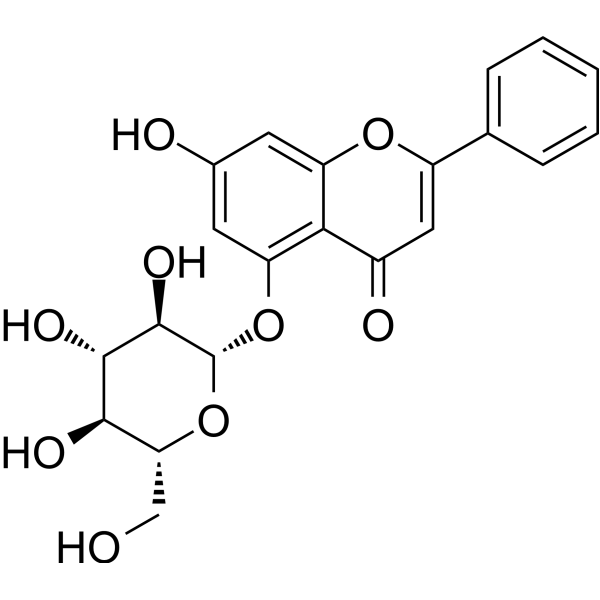
-
- HY-157394
-
|
|
Cholinesterase (ChE)
|
Inflammation/Immunology
|
|
eeAChE/eqBuChE-IN-1 (compound 3F) is a reversible dual eeAChE/eqBuChE inhibitor with IC50s of 1.3?μM and 0.81?μM, respectively. eeAChE/eqBuChE-IN-1 exhibits anti-inflammatory activity. eeAChE/eqBuChE-IN-1 also shows neuroprotective effect on Aβ25-35-induced PC12 cell injury .
|
-
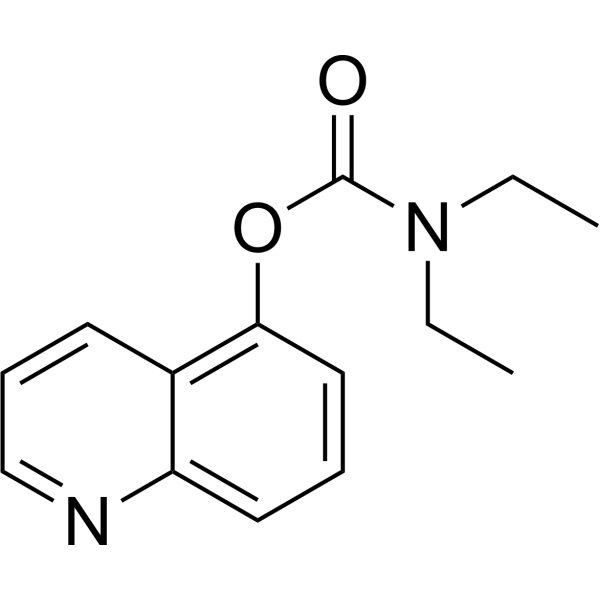
-
- HY-150563
-
|
|
Monoamine Oxidase
Amyloid-β
|
Neurological Disease
Inflammation/Immunology
|
|
Neuroinflammatory-IN-2 is a potent anti-neuroinflammatory agent with an IC50 value of 10.30 μM for MAO-B, and 96.33% inhibition of Aβ1-42 aggregation at 25 μM. Neuroinflammatory-IN-2 has neuroprotective activity in H2O2-induced PC-12 cell injury. Neuroinflammatory-IN-2 also has biometal chelating abilities, antioxidant activity, anti-neuroinflammatory activity and appropriate BBB permeability. Neuroinflammatory-IN-2 can be used for researching Alzheimer’s disease .
|
-
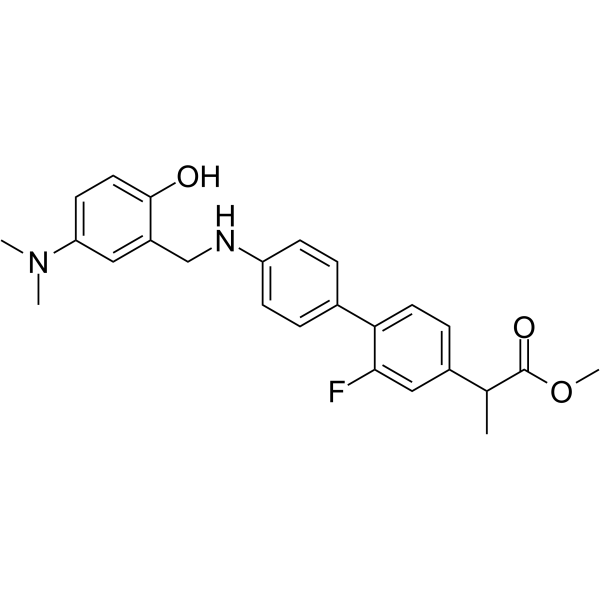
-
- HY-157437
-
|
|
Cholinesterase (ChE)
Reactive Oxygen Species
|
Neurological Disease
Inflammation/Immunology
|
|
AChE/BChE-IN-16 (compound C7) is a potent cholinesterase (ChE) inhibitor with IC50s of 30 nM and 48 nM for human acetylcholinesterase (hAChE) and human butyrylcholinesterase (hBChE), respectively. AChE/BChE-IN-16 exhibits a remarkable capacity to safeguard PC12 cells against H2O2-induced apoptosis and effectively suppresses the production of reactive oxygen species (ROS) .
|
-
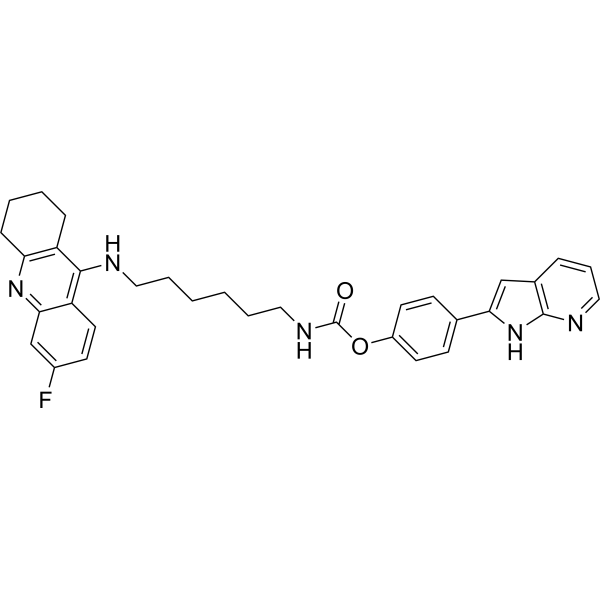
-
- HY-N0615
-
|
Sanchinoside R1; Sanqi glucoside R1
|
Amyloid-β
Apoptosis
|
Others
|
|
Notoginsenoside R1 (Sanchinoside R1), a saponin, is isolated from P. notoginseng. Notoginsenoside R1 exhibits anti-oxidation, anti-inflammatory, anti-angiogenic, and anti-apoptosis activities. Notoginsenoside R1 provides cardioprotection against ischemia/reperfusion (I/R) injury. Notoginsenoside R1 also provides neuroprotection in H2O2-induced oxidative damage in PC12 cells .
|
-
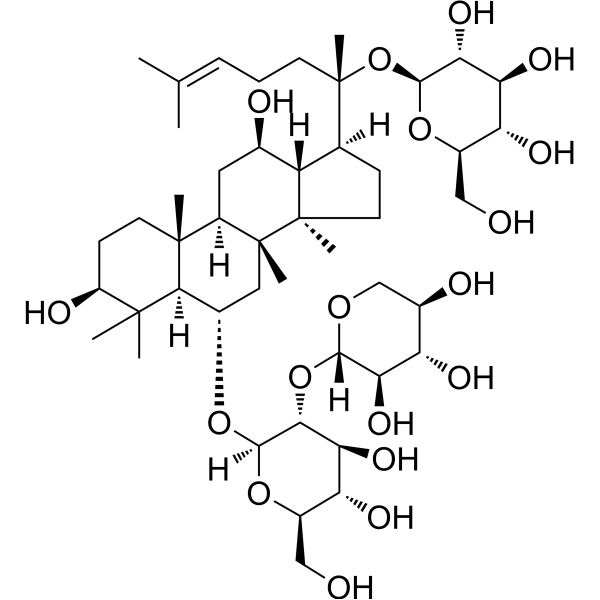
-
- HY-105118A
-
|
CGS-9343B; KW 5617
|
Calmodulin
|
Neurological Disease
Metabolic Disease
Inflammation/Immunology
|
|
Zaldaride maleate (CGS-9343B) is a potent, orally active and selective inhibitor of calmodulin. Zaldaride maleate (CGS-9343B) inhibits CaM (calmodulin)-stimulated cAMP phosphodiesterase activity, with an IC50 of 3.3 nM . Zaldaride maleate (CGS-9343B) prevents estrogen-induced transcription activation by ER, reversibly blocks voltage-activated Na +, Ca 2+ and K + currents in PC12 cells and inhibits nAChR .
|
-

-
- HY-N3938
-
|
|
Others
|
Neurological Disease
|
|
Gelsemiol is the main active ingredient in Verbena littoralis H. B. K.. Gelsemiol enhanced nerve growth factor (NGF) -induced axonal elongation in PC12D cells .
|
-
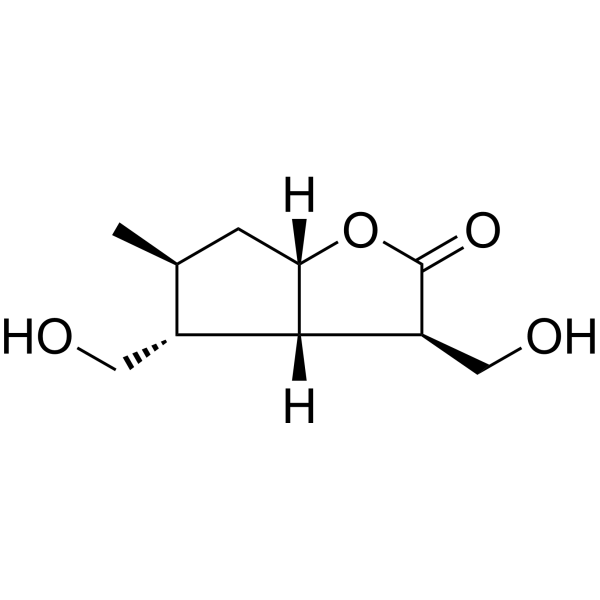
-
- HY-N12170
-
|
|
Others
|
Neurological Disease
|
|
Kissoone C (compound 3) is a three-membered ring sesquiterpene isolated from valerian root. Kissoone C can enhance the activity of nerve growth factor (NGF)-mediated neurite outgrowth in PC12D cells .
|
-

-
- HY-N3928
-
|
|
Others
|
Neurological Disease
|
|
Garciniaxanthone E is a xanthone compound. Garciniaxanthone E significantly enhances cellular nerve growth factor (NGF)-mediated neurite outgrowth in PC12D cells. Garciniaxanthone E contributes to basic research and medicinal development in neurodegenerative diseases .
|
-
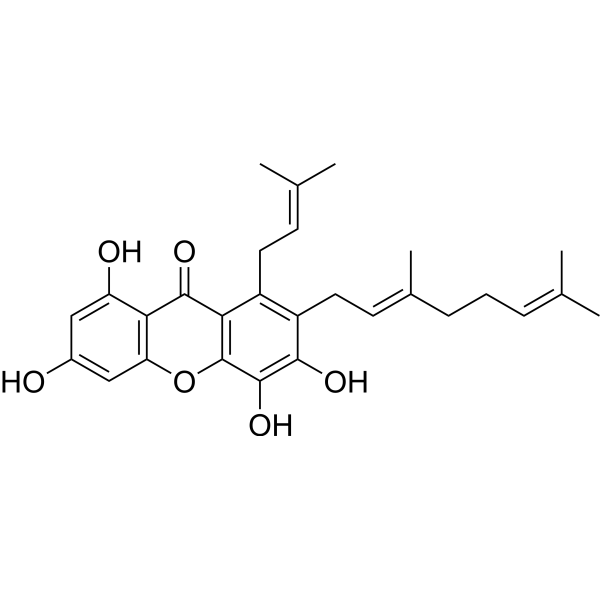
-
- HY-149803
-
|
|
Sigma Receptor
|
Neurological Disease
|
|
S1R agonist 1 (Compound 6b) is a selective S1R agonist with Kis of 0.93 nM and 72 nM for S1R and S2R, respectively. S1R agonist 1 exhibits neuroprotection against ROS and NMDA-induced neurotoxicity .
|
-
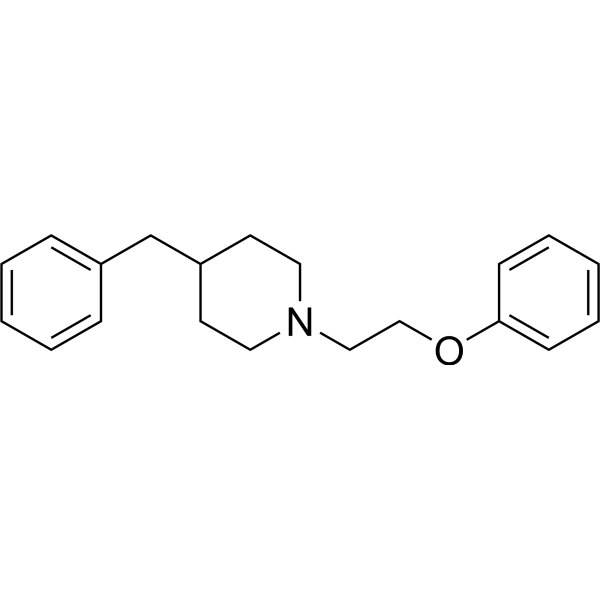
-
- HY-149804
-
|
|
Sigma Receptor
|
Neurological Disease
|
|
S1R agonist 2 (Compound 8b) is a selective S1R agonist with Kis of 1.1 nM and 88 nM for S1R and S2R, respectively. S1R agonist 2 exhibits neuroprotection against ROS and NMDA-induced neurotoxicity .
|
-
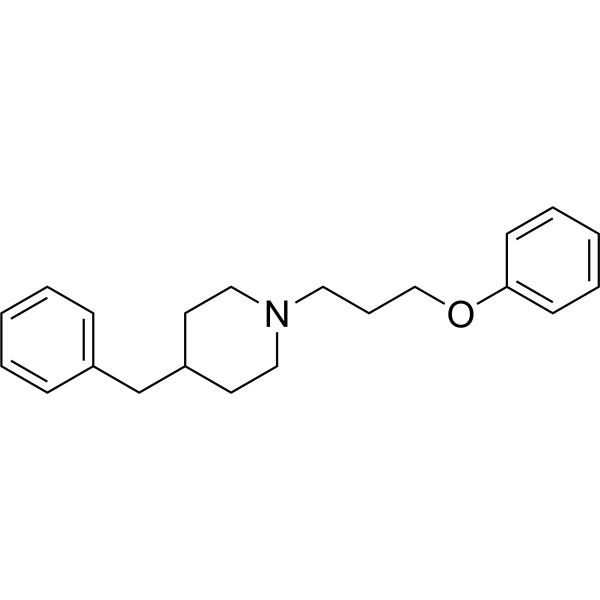
-
- HY-131640
-
|
1,2-Didecanoyl-sn-glycero-3-phosphocholine
|
Others
|
Others
|
|
1,2-Didecanoyl PC (1,2-Didecanoyl-sn-glycero-3-phosphocholine) is a phosphocholine that can be introduced into single-chain mean field theory as a coarse-grained model of saturated phospholipids. The 1,2-Didecanoyl PC model can be used to estimate the free energy of compressive or tensile bilayers in stacks or multilayers and gives a reasonable estimate of the free energy .
|
-

-
- HY-149803A
-
|
|
Sigma Receptor
|
Neurological Disease
|
|
S1R agonist 1 (Compound 6b) hydrochloride is a selective S1R agonist with Kis of 0.93 nM and 72 nM for S1R and S2R, respectively. S1R agonist 1 hydrochloride exhibits neuroprotection against ROS and NMDA-induced neurotoxicity .
|
-
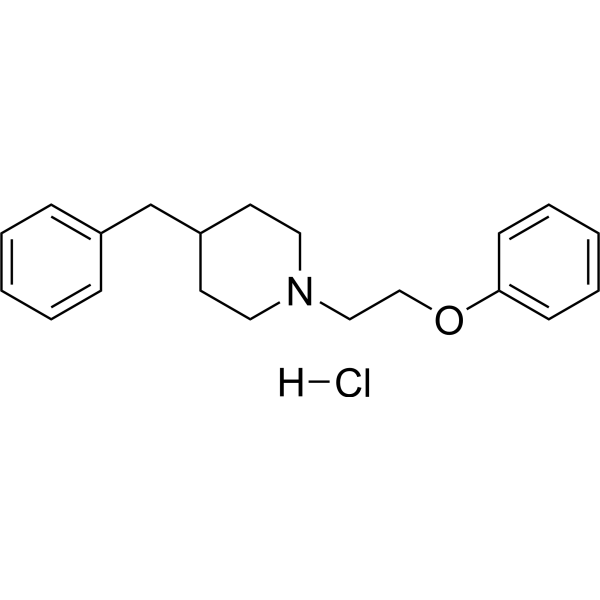
-
- HY-149804A
-
|
|
Sigma Receptor
|
Neurological Disease
|
|
S1R agonist 2 (Compound 8b) hydrochloride is a selective S1R agonist with Kis of 1.1 nM and 88 nM for S1R and S2R, respectively. S1R agonist 2 hydrochloride exhibits neuroprotection against ROS and NMDA-induced neurotoxicity .
|
-

-
- HY-146142
-
|
|
Cholinesterase (ChE)
Amyloid-β
|
Neurological Disease
|
|
AChE/BuChE-IN-2 (Compound 5f) is an orally active AChE and BuChE inhibitor with IC50 values of 0.72 μM and 0.16 μM, respectively. AChE/BuChE-IN-2 shows a non-competitive inhibition with AChE and shows potent self-induced β-amyloid (Aβ) aggregation inhibition with an IC50 of 62.52 μM. AChE/BuChE-IN-2 can cross the BBB .
|
-
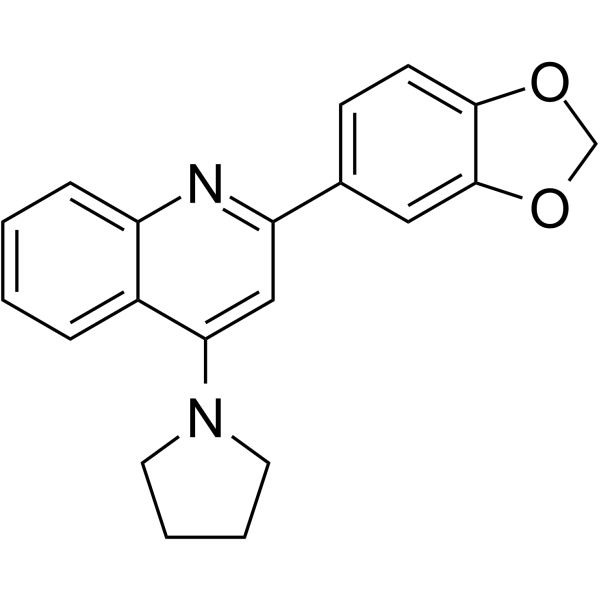
-
- HY-124366
-
|
|
Others
|
Infection
Cancer
|
|
Slingshot inhibitor D3 is a potent, selective, reversible and competitive inhibitor of Slingshot. The IC50 value for Slingshot 1 is 3 μM and the Ki value for Slingshot 2 is 3.9 μM. Slingshot inhibitor D3 has similar inhibitory activities toward both Slingshot 1 and Slingshot 2 .
|
-
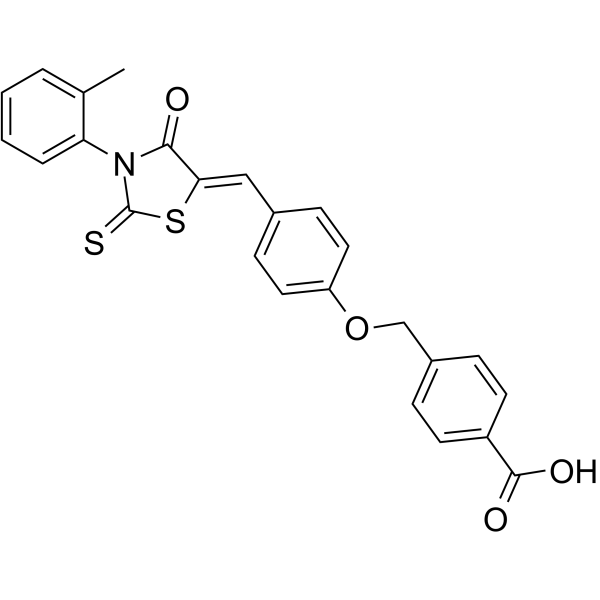
-
- HY-147980
-
|
|
Amyloid-β
Cholinesterase (ChE)
|
Neurological Disease
|
|
Aβ-IN-5 (Compound e12) is an orally active Aβ aggregation inhibitor. Aβ-IN-5 also inhibits AChE and BuChE with IC50 values of 21.29 μM and 1.32 μM, respectively. Aβ-IN-5 shows excellent neuroprotective effects and low neurotoxicity .
|
-
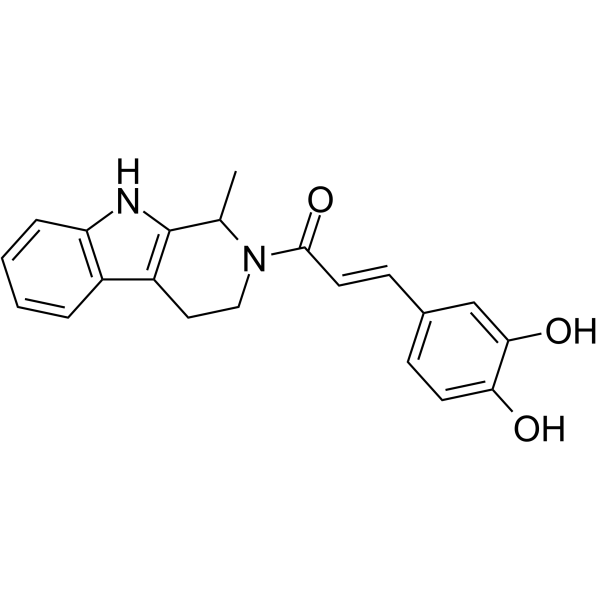
-
- HY-P4439
-
|
|
Amino Acid Derivatives
|
Neurological Disease
|
|
H-Met-Val-OH is a dipeptide containing free N-terminal methionine. H-Met-Val-OH exhibits activity against cDNA expressing Flavin-containing monooxygenase (FMO) 1 and FMO3. H-Met-Val-OH has potential applications in the growth of neuritis .
|
-
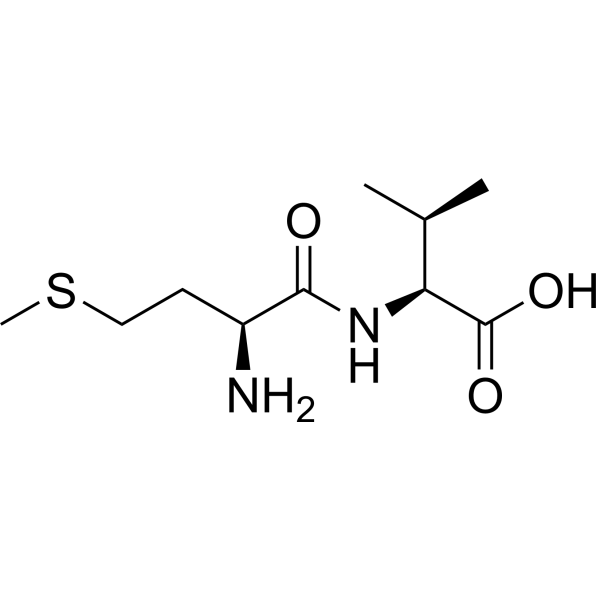
- HY-N9371
-
|
Dicrocin
|
Endogenous Metabolite
|
Others
|
|
Crocin IV (Dicrocin), a crocetin glycoside, is a carotenoid pigment. Crocin IV has potent antioxidant activity .
|
-

- HY-139646
-
|
|
Fluorescent Dye
|
Neurological Disease
|
|
KMG-104 is a highly selective fluorescent Mg 2+ probe. KMG-104 has been used widely and revealed Mg 2+ mobilization in cytoplasm in various types of cells .
|
-

- HY-151596
-
-

- HY-15780
-
|
OPC-34712
|
5-HT Receptor
Dopamine Receptor
Adrenergic Receptor
|
Neurological Disease
|
|
Brexpiprazole (OPC-34712), an atypical orally active antipsychotic agent, is a partial agonist of human 5-HT1A and dopamine D2L receptor with Kis of 0.12 nM and 0.3 nM, respectively. Brexpiprazole is also a 5-HT2A receptor antagonist with a Ki of 0.47 nM. Brexpiprazole also shows potent antagonist activity at human noradrenergic α1B (Ki=0.17 nM) and α2C receptors (Ki=0.59 nM) .
|
-
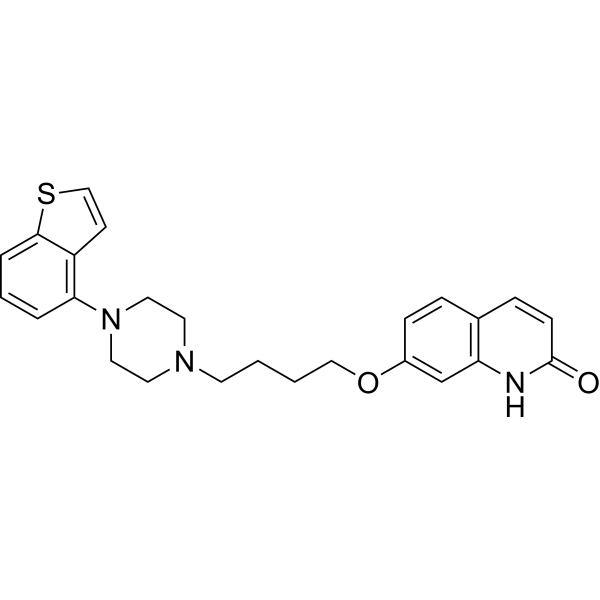
- HY-103412
-
|
|
Dopamine Receptor
Sigma Receptor
|
Neurological Disease
|
|
SKF83959 hydrobromide is a potent and selective dopamine D1-like receptor partial agonist. SKF83959 hydrobromide Ki values for rat D1, D5, D2 and D3 receptors are 1.18, 7.56, 920 and 399 nM, respectively. SKF83959 hydrobromide is a potent allosteric modulator of sigma (σ)-1 receptor. SKF83959 hydrobromide belongs to benzazepine family and has improvements on cognitive dysfunction. SKF83959 hydrobromide can be used for the research of Alzheimer's disease and depression .
|
-
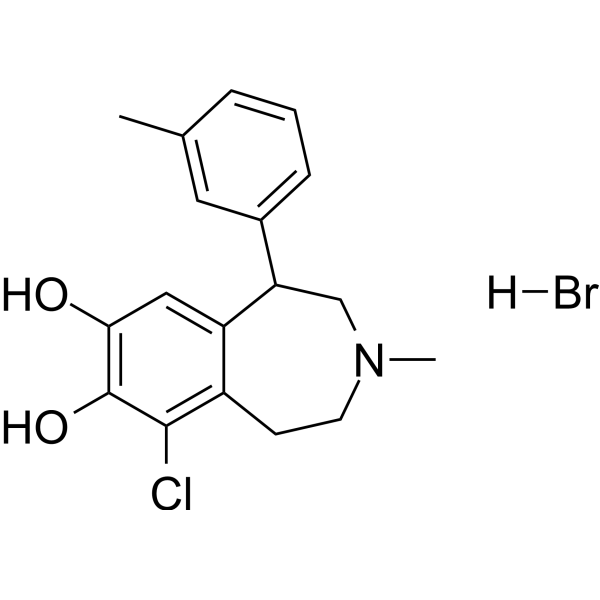
- HY-130344
-
|
|
Dopamine Receptor
Sigma Receptor
|
Neurological Disease
|
|
SKF83959 is a potent and selective dopamine D1-like receptor partial agonist. SKF83959 Ki values for rat D1, D5, D2 and D3 receptors are 1.18, 7.56, 920 and 399 nM, respectively. SKF83959 is a potent allosteric modulator of sigma (σ)-1 receptor. SKF83959 belongs to benzazepine family and has improvements on cognitive dysfunction. SKF83959 can be used for the research of Alzheimer's disease and depression .
|
-

- HY-15780A
-
|
OPC-34712 hydrochloride
|
5-HT Receptor
Dopamine Receptor
Adrenergic Receptor
|
Neurological Disease
|
|
Brexpiprazole (OPC-34712) hydrochloride, an atypical orally active antipsychotic agent, is a partial agonist of human 5-HT1A and dopamine D2L receptor with Kis of 0.12 nM and 0.3 nM, respectively. Brexpiprazole hydrochloride is also a 5-HT2A receptor antagonist with a Ki of 0.47 nM. Brexpiprazole hydrochloride also shows potent antagonist activity at human noradrenergic α1B (Ki=0.17 nM) and α2C receptors (Ki=0.59 nM) .
|
-

- HY-16663
-
ITX3
2 Publications Verification
|
Others
|
Others
|
|
ITX3 is a specific and nontoxic inhibitor of TrioN (N-terminal GEF domain of the multidomain Trio protein) with an IC50 value of 76 μM. ITX3 can be used for the research of agent .
|
-
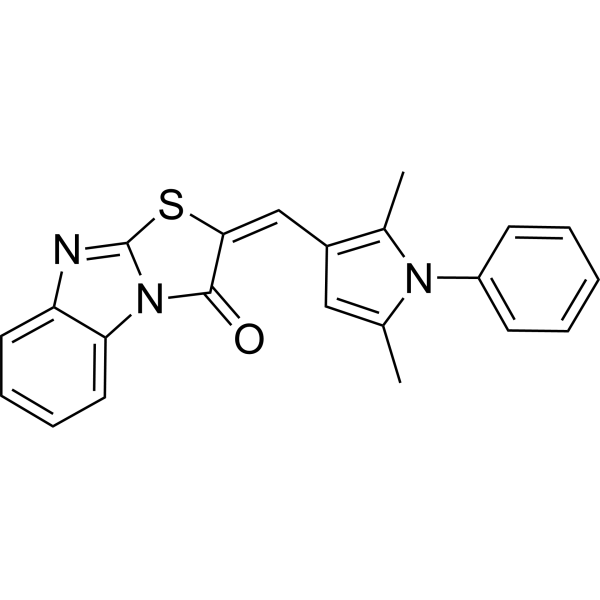
- HY-N4119
-
|
|
Cholinesterase (ChE)
|
Neurological Disease
|
|
Neoeriocitrin, isolated from Drynaria Rhizome, shows activity on proliferation and osteogenic differentiation in MC3T3-E1. Neoeriocitrin is a potent acetylcholinesterase (AChE) inhibitor .
|
-
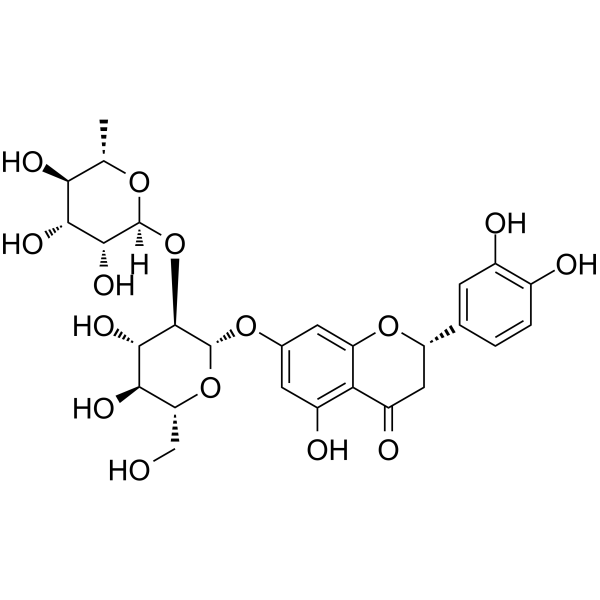
- HY-143413
-
|
|
Amyloid-β
|
Neurological Disease
Inflammation/Immunology
|
|
BuChE-IN-2 is an excellent butyrylcholinesterase (BuChE) inhibitor (IC50s of 1.28 μM and 0.67 μM for BuChE and NO). BuChE-IN-2 can inhibit the aggregation of Aβ, ROS formation and chelate Cu 2+, exhibiting proper blood-brain barrier (BBB) penetration. BuChE-IN-2 has potential to research Alzheimer’s disease .
|
-

- HY-116753
-
|
|
Amyloid-β
Tau Protein
|
Neurological Disease
|
|
(-)Clausenamide is an active alkaloid isolated from the leaves of Clausena lansium (Lour.) Skeels, and improves cognitive function in both normal physiological and pathological conditions. (-)Clausenamide inhibits β-amyloid (Aβ) toxicity, blocking neurofibrillary tangle formation by inhibiting the phosphorylation of tau protein. (-)Clausenamide exerts a significant neuroprotective activity against Aβ25-35. (-)Clausenamide can be used for researching Alzheimer's disease (AD) .
|
-
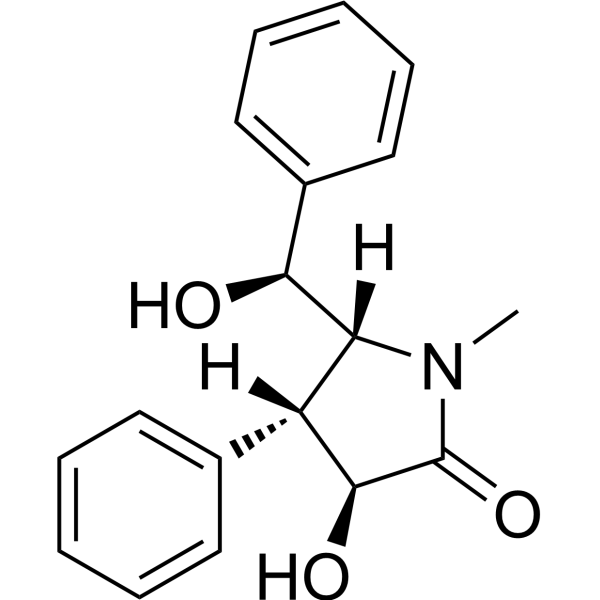
- HY-N9690
-
|
Longistylin A
|
Bacterial
|
Infection
Neurological Disease
|
|
Longistyline A (Longistylin A) is a natural stilbene, it can be isolated from leaves of Cajanus cajan. Longistyline A shows antimicrobial activity against MRSA with an MIC value of 1.56 μg/mL. Longistyline A shows neuroprotective effects, it can be used for the research of infection and nerve diseases .
|
-
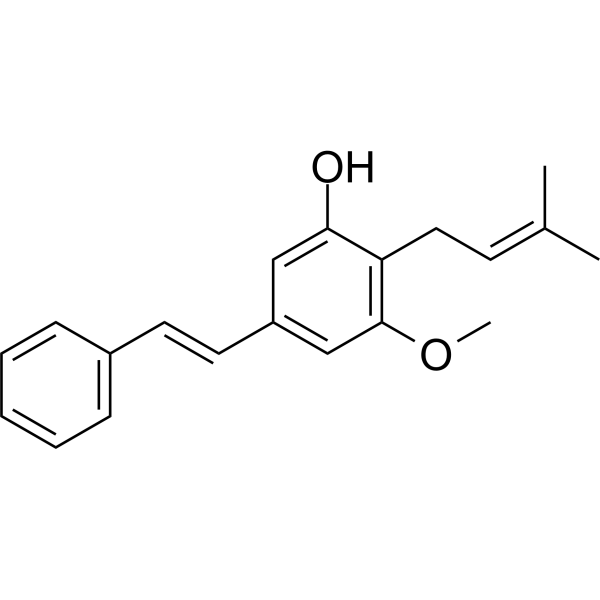
- HY-N4100
-
|
|
HIV
SGLT
|
Infection
|
|
Trilobatin, a natural sweetener derived from Lithocarpus polystachyus Rehd , Trilobatin is an HIV-1 entry inhibitor targeting the HIV-1 Gp41 envelope . Neuroprotective effects . Trilobatin is also a SGLT1/2 inhibitor that selectively induces the proliferation of human hepatoblastoma cells .
|
-
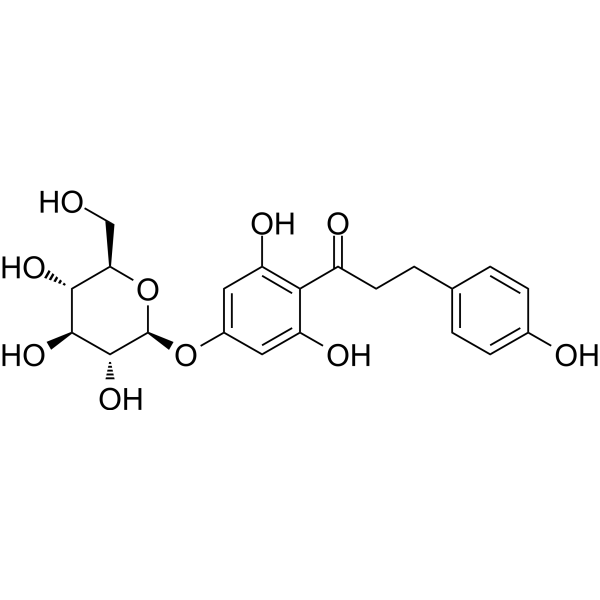
- HY-13706A
-
|
TM30089
|
Prostaglandin Receptor
|
Inflammation/Immunology
|
|
CAY10471 (TM30089) is a potent, selective, and orally active prostaglandin D2 receptor CRTH2 antagonist. CAY10471 attenuates the progression of tubulointerstitial fibrosis and chronic contact hypersensitivity (CHS) in animal model .
|
-
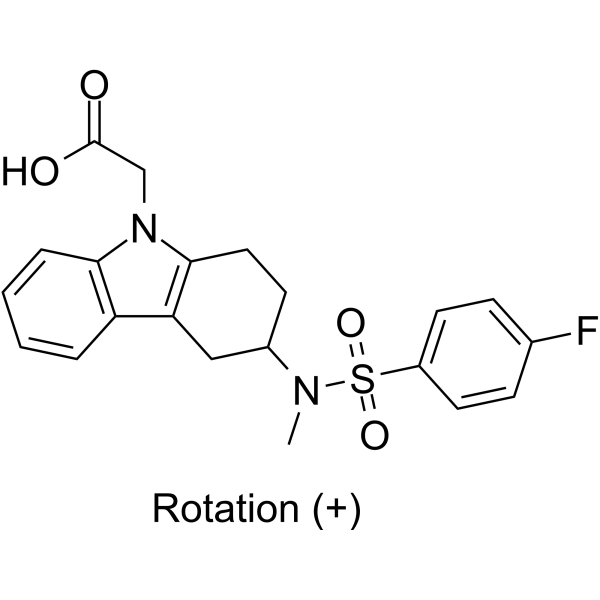
- HY-145845
-
|
|
HDAC
Monoamine Oxidase
|
Neurological Disease
|
|
HDAC1/MAO-B-IN-1 is a potent, selective and cross the blood-brain barrier HDAC1/MAO-B inhibitor with IC50 values of 21.4 nM and 99.0 nM for HDAC1 and MAO-B, respectively. HDAC1/MAO-B-IN-1 has the potential for the research of Alzheimer’s disease .
|
-

- HY-151430
-
-
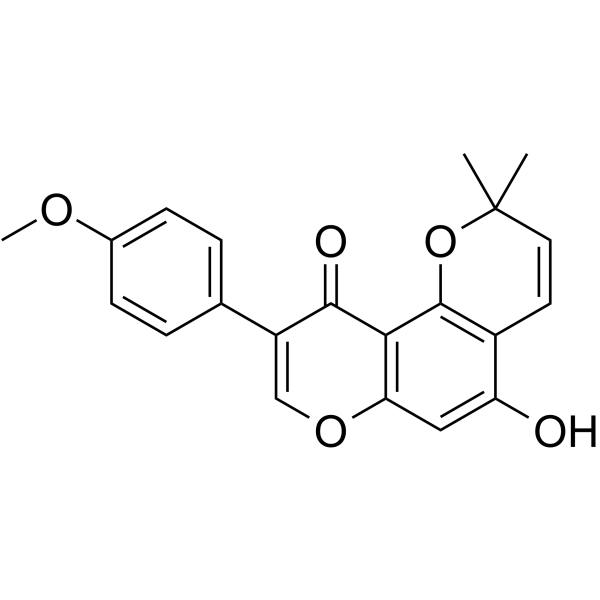
- HY-D1259
-
|
VDP-green (NEP)
|
Fluorescent Dye
|
Neurological Disease
|
|
NEP (VDP-green (NEP)) is a turn-on fluorescent probe based on the intramolecular charge transfer (ICT) mechanism for sensing vicinal dithiol-containing proteins (VDPs). NEP exhibits high selectivity toward VDPs in live cells and in vivo and displays a strong green fluorescence signal (λex/λem=430/535 nm). NEP has the potential for parkinsonism .
|
-
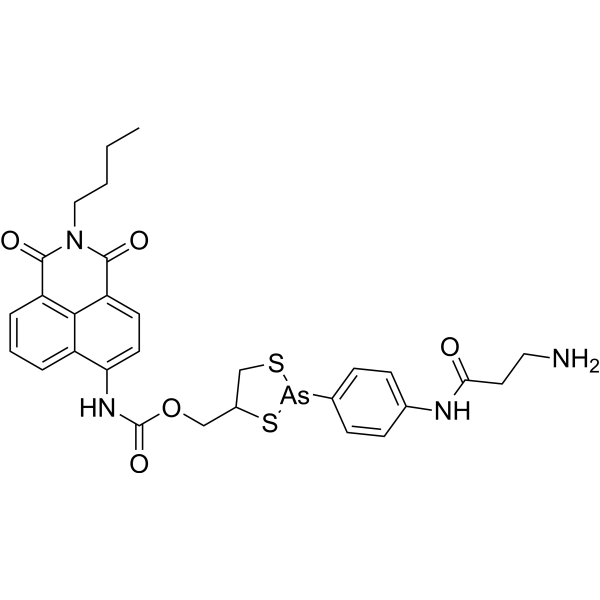
- HY-144790
-
|
|
Amyloid-β
Cholinesterase (ChE)
Monoamine Oxidase
|
Neurological Disease
|
|
AChE-IN-12 is a potent and blood-brain barrier (BBB) penetrant acetylcholinesterase (AChE) with IC50s of 0.41 μM and 1.88 μM for rat AChE and electric eel AChE. AChE-IN-12 is also a good antioxidant (ORAC = 3.3 eq), selective metal chelator and huMAO-B inhibitor (IC50 = 8.8 µM). AChE-IN-12 has remarkable inhibition of self- and Cu 2+-induced Aβ1-42 aggregation, as well as exhibits a good neuroprotective effect. AChE-IN-12 can be used for researching Alzheimer’s disease .
|
-
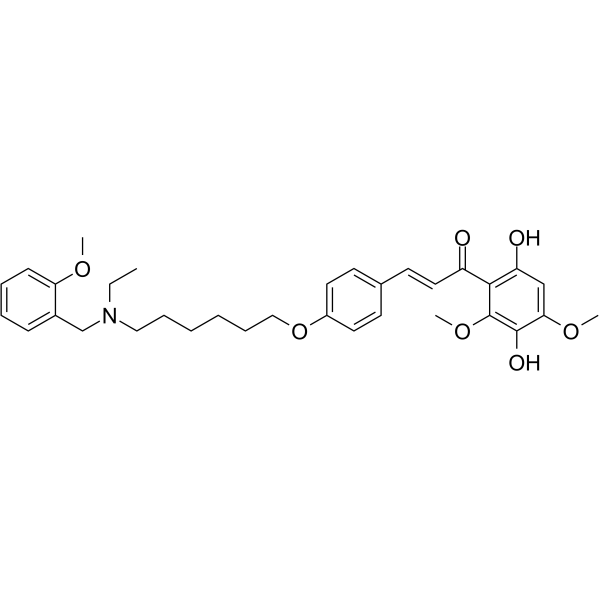
- HY-151386
-
|
|
Cholinesterase (ChE)
|
Neurological Disease
|
|
BChE-IN-13 (Compound 17c) is an orally active, potent and selective Butyrylcholinesterase (BChE) inhibitor with IC50s of 0.22 and 0.016 μM for eqBChE and hBChE, respectively. BChE-IN-13 can improve memory and cognitive impairments, and be used in Alzheimer’s disease (AD) research .
|
-
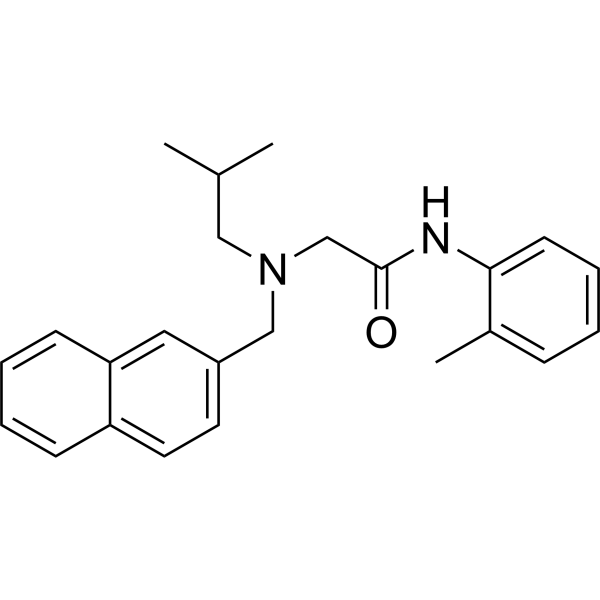
- HY-120251A
-
|
AIT-082
|
Reactive Oxygen Species
|
Neurological Disease
|
|
Leteprinim potassium (AIT-082), a purine analog, is a neuroprotective agent and cognitive enhancer. Leteprinim potassium is a hypoxanthine derivative neurotrophic agent. Leteprinim potassium can induce brain-derived neurotrophic factor (BDNF) mRNA production following spinal cord lesions, and nerve growth factor (NGF) mRNA production in basal forebrain. Leteprinim potassium reduces glutamate toxicity in cultured hippocampal neurons. Leteprinim potassium increases heme-oxygenase 1 and 2 mRNA levels that play role in cellular defense against reactive oxygen species .
|
-
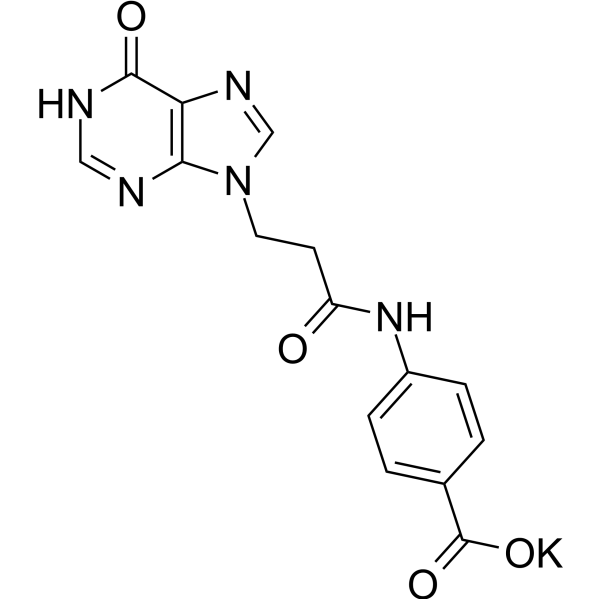
- HY-120251
-
|
AIT-082 free acid
|
Reactive Oxygen Species
|
Neurological Disease
|
|
Leteprinim (AIT-082 free acid), a purine analog, is a neuroprotective agent and cognitive enhancer. Leteprinim is a hypoxanthine derivative neurotrophic agent. Leteprinim can induce brain-derived neurotrophic factor (BDNF) mRNA production following spinal cord lesions, and nerve growth factor (NGF) mRNA production in basal forebrain. Leteprinim reduces glutamate toxicity in cultured hippocampal neurons. Leteprinim increases heme-oxygenase 1 and 2 mRNA levels that play role in cellular defense against reactive oxygen species .
|
-
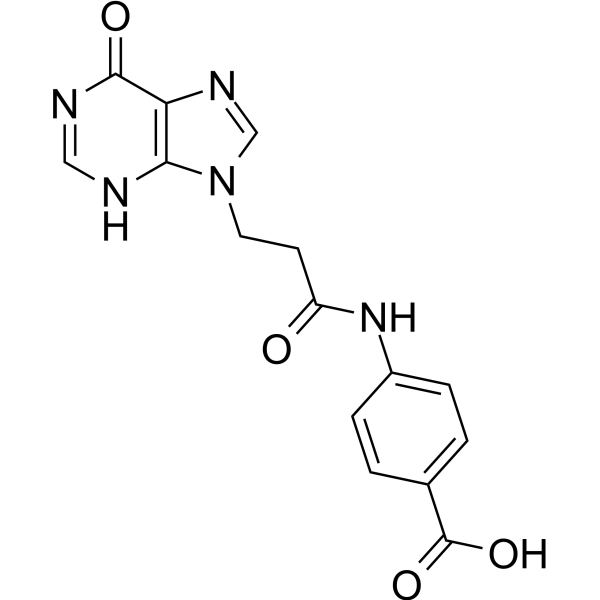
- HY-P3709
-
|
|
p62
E1/E2/E3 Enzyme
|
Neurological Disease
|
|
TRAF6 peptide is a specific TRAF6-p62 inhibitor. TRAF6 peptide potently abrogates NGF-dependent TrkA ubiquitination. TRAF6 peptide has good research potential in neurological diseases such as alzheimer's disease (AD), parkinson's, ALS, head trauma, epilepsy and stroke .
|
-
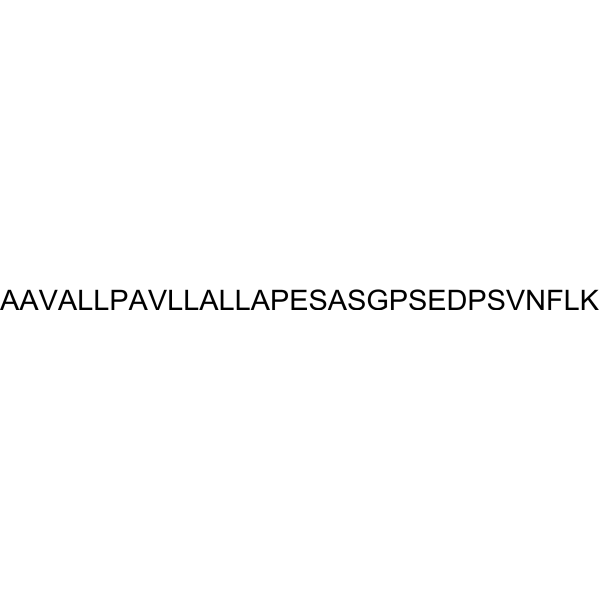
- HY-P3709A
-
|
|
p62
E1/E2/E3 Enzyme
|
Neurological Disease
|
|
TRAF6 peptide TFA is a specific TRAF6-p62 inhibitor. TRAF6 peptide TFA potently abrogates NGF-dependent TrkA ubiquitination. TRAF6 peptide TFA has good research potential in neurological diseases such as alzheimer's disease (AD), parkinson's, ALS, head trauma, epilepsy and stroke .
|
-

- HY-N10512
-
|
Gg4
|
Others
|
Neurological Disease
|
|
Gangliotetraose (Gg4) is a tetrasccharide, exhibits major components including GM1 and its sialylated derivatives. GM1 facilitates efflux of nuclear Ca 2+ and reduces the level of nuclear Ca 2+ that characterizes the differentiated neuron. GM1 affects neuronal plasticity and repair mechanisms, as well as neurotrophin release in the brain .
|
-

- HY-B1081
-
|
6-Hydroxydopamine hydrochloride; 6-OHDA hydrochloride
|
Dopamine Receptor
Autophagy
Mitophagy
COX
PGE synthase
Interleukin Related
p38 MAPK
Apoptosis
Caspase
|
Neurological Disease
Cancer
|
|
Oxidopamine (6-OHDA) hydrochloride is an antagonist of the neurotransmitter dopamine. Oxidopamine hydrochloride is a widely used neurotoxin and selectively destroys dopaminergic neurons. Oxidopamine hydrochloride promotes COX-2 activation, leading to PGE2 synthesis and pro-inflammatory cytokine IL-1β secretion. Oxidopamine hydrochloride can be used for the research of Parkinson’s disease (PD), attention-deficit hyperactivity disorder (ADHD), and Lesch-Nyhan syndrome .
|
-

- HY-B1081A
-
|
6-Hydroxydopamine hydrobromide; 6-OHDA hydrobromide
|
Dopamine Receptor
Autophagy
Mitophagy
COX
PGE synthase
Interleukin Related
p38 MAPK
Apoptosis
Caspase
|
Neurological Disease
Cancer
|
|
Oxidopamine (6-OHDA) hydrobromide is an antagonist of the neurotransmitter dopamine. Oxidopamine hydrobromide is a widely used neurotoxin and selectively destroys dopaminergic neurons. Oxidopamine hydrobromide promotes COX-2 activation, leading to PGE2 synthesis and pro-inflammatory cytokine IL-1β secretion. Oxidopamine hydrobromide can be used for the research of Parkinson’s disease (PD), attention-deficit hyperactivity disorder (ADHD), and Lesch-Nyhan syndrome .
|
-

| Cat. No. |
Product Name |
Type |
-
- HY-128536
-
|
|
Fluorescent Dyes/Probes
|
|
KMG-104AM, a selective fluorescein-derived magnesium fluorescent membrane-permeable probe, successfully incorporates into PC12 cells and is used to Intracellular 3D Mg 2+ Imaging .
|
-
- HY-D1259
-
|
VDP-green (NEP)
|
Fluorescent Dyes/Probes
|
|
NEP (VDP-green (NEP)) is a turn-on fluorescent probe based on the intramolecular charge transfer (ICT) mechanism for sensing vicinal dithiol-containing proteins (VDPs). NEP exhibits high selectivity toward VDPs in live cells and in vivo and displays a strong green fluorescence signal (λex/λem=430/535 nm). NEP has the potential for parkinsonism .
|
| Cat. No. |
Product Name |
Target |
Research Area |
-
- HY-P1831
-
|
ProAM N20, Human; PAMP-20, human
|
Peptides
|
Neurological Disease
|
|
Proadrenomedullin (1-20), human is a potent hypotensive and catecholamine release–inhibitory peptide released from chromaffin cells with an IC50 of ~350 nM for catecholamine secretion in PC12 pheochromocytoma cells, acting in a noncompetitive manner specifically at the nicotinic cholinergic receptor .
|
-
- HY-P5754
-
|
|
Apoptosis
|
Neurological Disease
|
|
TAT-NEP1-40 is a BBB-penatrable peptide. TAT-NEP1-40 protects PC12 cells against oxygen and glucose deprivation (OGD), and promotes neurite outgrowth. TAT-NEP1-40 also improves ischemia-induced neurologic outcomes by inhibiting cell apoptosis in ischemic brains. TAT-NEP1-40 can be used for research of CNS injuries, such as axonal regeneration and functional recovery after stroke .
|
-
- HY-P5876
-
|
ProADM N20(bovine, porcine); PAMP-20(bovine, porcine)
|
nAChR
|
Neurological Disease
|
|
Proadrenomedullin (N-20) (ProADM N20) (bovine, porcine) is a potent and noncompetitive hypotensive and catecholamine release-inhibitory peptide released from chromaffin cells. Proadrenomedullin (N-20) (bovine, porcine) inhibits catecholamine secretion with an IC50 of 350 nM in PC12 pheochromocytoma cells. Proadrenomedullin (N-20) (bovine, porcine) also blocks (EC50≈270 nM) nicotinic cholinergic agonist desensitization of catecholamine release, as well as desensitization of nicotinic signal transduction ( 22Na + uptake) .
|
-
- HY-P5754A
-
|
|
Apoptosis
|
Neurological Disease
|
|
TAT-NEP1-40 TFA is a BBB-penatrable peptide. TAT-NEP1-40 TFA protects PC12 cells against oxygen and glucose deprivation (OGD), and promotes neurite outgrowth. TAT-NEP1-40 TFA also improves ischemia-induced neurologic outcomes by inhibiting cell apoptosis in ischemic brains. TAT-NEP1-40 TFA can be used for research of CNS injuries, such as axonal regeneration and functional recovery after stroke .
|
-
- HY-P5754B
-
|
|
Apoptosis
|
Neurological Disease
|
|
TAT-NEP1-40 acetate is a therapeutic candidate for axonal regeneration and functional recovery after stroke. TAT-NEP1-40 acetate can protect PC12 cells against oxygen and glucose deprivation (OGD) and promote neurite outgrowth. TAT-NEP1-40 acetate protects the brain against ischemia/reperfusion injury through inhibition of neuronal apoptosis. TAT-NEP1-40 acetate can be efficiently delivered into the rat brains .
|
-
- HY-P5156
-
|
|
Potassium Channel
|
Neurological Disease
|
|
BDS-I known as blood depressing substance, is a marine toxin which can be extracted from Anemonia sulcata. BDS-I is a specific inhibitor of Potassium Channel, targeting to Kv3.4. BDS-I inhibits Aβ1-42-induced enhancement of KV3.4 activity, caspase-3 activation, and abnormal nuclear morphology of NGF-differentiated PC-12 cells. BDS-I reverts the Aβ peptide-induced cell death .
|
-
- HY-P4439
-
|
|
Amino Acid Derivatives
|
Neurological Disease
|
|
H-Met-Val-OH is a dipeptide containing free N-terminal methionine. H-Met-Val-OH exhibits activity against cDNA expressing Flavin-containing monooxygenase (FMO) 1 and FMO3. H-Met-Val-OH has potential applications in the growth of neuritis .
|
-
- HY-P3709
-
|
|
p62
E1/E2/E3 Enzyme
|
Neurological Disease
|
|
TRAF6 peptide is a specific TRAF6-p62 inhibitor. TRAF6 peptide potently abrogates NGF-dependent TrkA ubiquitination. TRAF6 peptide has good research potential in neurological diseases such as alzheimer's disease (AD), parkinson's, ALS, head trauma, epilepsy and stroke .
|
-
- HY-P3709A
-
|
|
p62
E1/E2/E3 Enzyme
|
Neurological Disease
|
|
TRAF6 peptide TFA is a specific TRAF6-p62 inhibitor. TRAF6 peptide TFA potently abrogates NGF-dependent TrkA ubiquitination. TRAF6 peptide TFA has good research potential in neurological diseases such as alzheimer's disease (AD), parkinson's, ALS, head trauma, epilepsy and stroke .
|
-
- HY-K3001
-
|
|
|
DMEM (Dulbecco's Modified Eagle Medium) is a widely used basal medium for supporting the growth of many different mammalian cells. Cell lines successfully cultured in DMEM include Hela, 293, Cos-7, and PC-12, as well as primary fibroblasts, neurons, glial cells, HUVECs, and smooth muscle cells.
|
-
- HY-K3003
-
|
|
|
DMEM (Dulbecco's Modified Eagle Medium) is a widely used basal medium for supporting the growth of many different mammalian cells. Cell lines successfully cultured in DMEM include Hela, 293, Cos-7, and PC-12, as well as primary fibroblasts, neurons, glial cells, HUVECs, and smooth muscle cells, etc.
|
| Cat. No. |
Product Name |
Category |
Target |
Chemical Structure |
| Cat. No. |
Product Name |
Chemical Structure |
-
- HY-17406S
-
|
|
|
Tolcapone-d7 is a deuterium labeled Tolcapone. Tolcapone is a selective, potent and orally active COMT inhibitor. Tolcapone is also a potent inhibitor of α-syn and Aβ42 oligomerization and fibrillogenesis and protect against extracellular toxicity induced by the aggregation of both proteins in PC12 cells[1][2].
|
-

Your information is safe with us. * Required Fields.
Inquiry Information
- Product Name:
- Cat. No.:
- Quantity:
- MCE Japan Authorized Agent:




















































































